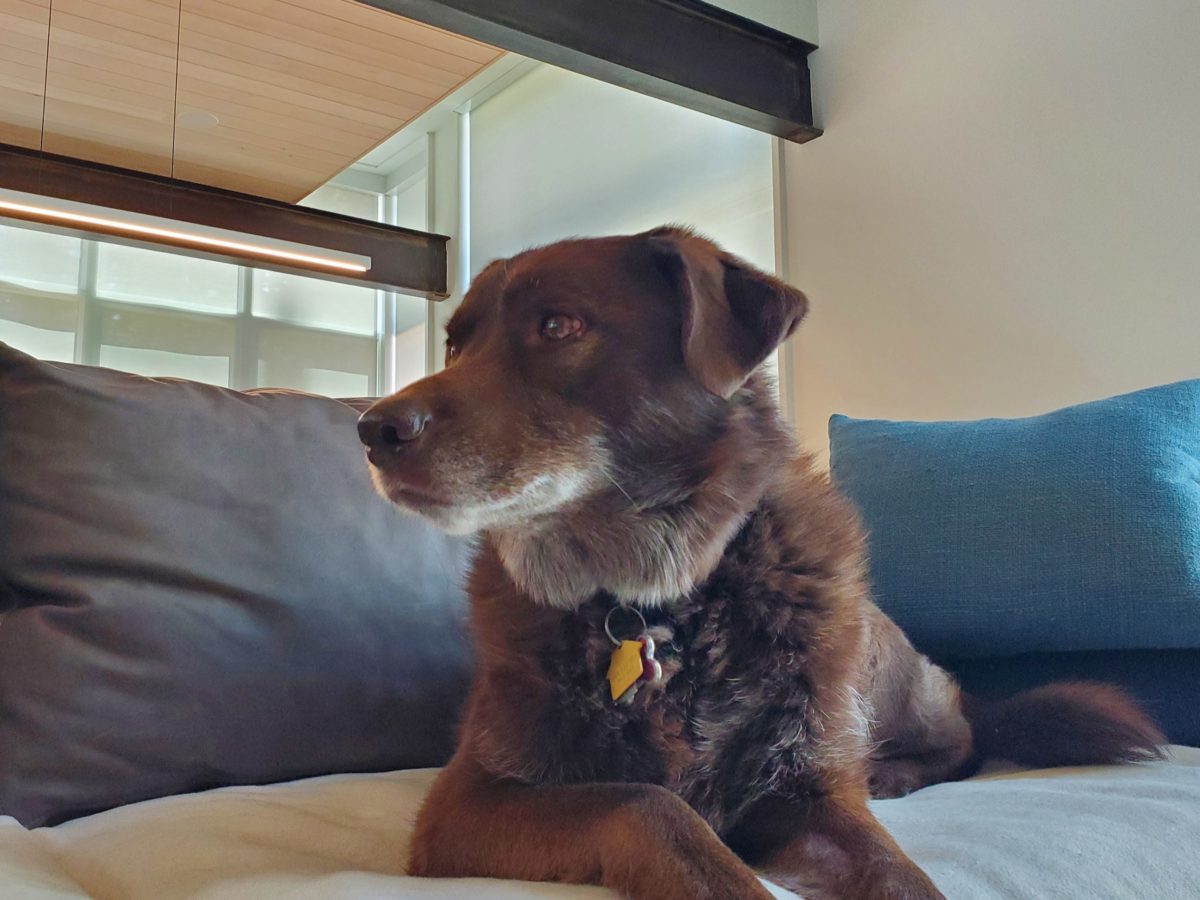Many of us have experience with sound-sensitive pets. Fear of thunder, for example, is common among dogs and cats, and we all know how crazy our pets get when a home smoke alarm is malfunctioning!
Pets get worried about sounds in part because they can hear much better than we can. Humans can hear a frequency range up to 20kHZ, whereas dogs can hear up to 45kHZ, and cats can hear up to 64kHZ. To put this in understandable terms, our pets hear high-frequency noises that we are not even aware of. In addition to hearing a broader range of frequencies, dogs and cats also hear noises that are below the volume of anything we can hear.
When we consider potential sound stressors in the home, one of the most common is lighting. In the United States, power is delivered via alternating current. Depending on the technology of the lighting, this power delivery results in buzzing and flickering. Incandescent fixtures do not tend to buzz or flicker, although they’re no longer manufactured for residential lighting due to their excessive energy consumption. Fluorescent fixtures do buzz and flicker, and people who work under fluorescent lights report more eye strain, headaches, and fatigue, even if they can’t perceive with their conscious minds the lighting inconsistencies. Out pets can consciously see and hear a fluorescent fixture buzzing and flickering, which makes for an unpleasant environment for them.
Other typical sound stressors include electronics such as speakers, flat screens, and LCD TVs. For more interesting information on this topic, see this technology-based article.
Given that our modern homes are fraught with opportunities for auditory distress for our pets, here are some practical tips for calming the cacophony:
- Better Lighting: The best lighting for the home is properly selected LEDs. LED fixtures convert alternating current to direct current, eliminating buzzing and flickering. Be wary of cheap versions of LED fixtures as they do not work as well. Fortunately, the future of home lighting is LED, and so the technology continues to improve to bring us better quality, healthier lighting.
- Keep Tech Out of Sleeping Areas: This is better for you as well, as the bright blue lighting from screens is known to disturb human sleep, even after it is turned off. If your pets are in the bedroom at night, the whines, buzzes, and ultrasonic noises emitted by electronic equipment can also disturb their rest.
- Create a Tech-Free Zone for Pets: In addition to reducing technology in the sleeping area, consider creating a quiet space for your pet somewhere away from all technology.
- Respect Your Dogs’ and Cats’ Phobias: My husband, who is a human doctor, brought home an electrocautery tool one day and our pets went nuts when it was turned on. There is no doubt the tool made noises that were disturbing to them. If you are tuned in to your pets, you’ll find that they will respond in fearful ways to various and unpredictable mechanical or electrical objects. Respect these phobias as they exist for good reasons.
- Keep Voices and Music Down: Remember, our pets have great hearing, so be aware that loud music is disturbing to them, and yelling is terrible! A quiet home is a relaxing home for us and our pets. You can make exceptions for parties and celebrations but consider having pets stay in a space where they will feel safe if the noise becomes too much for them.
- Use Masking Noises: Very quiet music or audiobooks can be relaxing to some animals. Try it at home to see if it works for your pets. The technique of playing soft masking sounds can be helpful when there is scary background noise, such as the rumble of distant thunder. Do not play masking sounds all the time; your pet deserves some rest from auditory stimulation. Use high-quality speakers when playing music, as these are less likely to create unnecessary noise outside of the intended frequency range.
The more aware we are of our pets’ excellent hearing, the more we can work together to create quiet, relaxing, Fear Free happy homes.
This article was reviewed/edited by board-certified veterinary behaviorist Dr. Kenneth Martin and/or veterinary technician specialist in behavior Debbie Martin, LVT.








